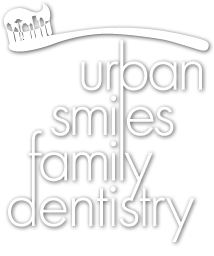Digital Radiography
 Dental x-rays are essential, preventative, diagnostic tools that provide valuable information not visible during a visual dental exam. Dentists and dental hygienists use this information to safely and accurately detect hidden dental abnormalities and complete an accurate treatment plan.
Dental x-rays are essential, preventative, diagnostic tools that provide valuable information not visible during a visual dental exam. Dentists and dental hygienists use this information to safely and accurately detect hidden dental abnormalities and complete an accurate treatment plan.
ARE DENTAL X-RAYS SAFE?
 We are all exposed to natural radiation in our environment. Digital x-rays produce a significantly lower level of radiation (80% less) compared to traditional dental x-rays. Not only are digital x-rays better for the health and safety of the patient, they are faster and more comfortable to take, which reduces your time in the dental office. Also, since the digital image is captured electronically, there is no need to develop the x-rays, thus eliminating the disposal of harmful waste and chemicals into the environment.
We are all exposed to natural radiation in our environment. Digital x-rays produce a significantly lower level of radiation (80% less) compared to traditional dental x-rays. Not only are digital x-rays better for the health and safety of the patient, they are faster and more comfortable to take, which reduces your time in the dental office. Also, since the digital image is captured electronically, there is no need to develop the x-rays, thus eliminating the disposal of harmful waste and chemicals into the environment.
Even though digital x-rays produce a low level of radiation and are considered very safe, dentists still take necessary precautions to limit the patient’s exposure to radiation. These precautions include only taking those x-rays that are necessary, and using lead apron shields to protect the body.
HOW OFTEN SHOULD DENTAL X-RAYS BE TAKEN?
 The need for dental x-rays depends on each patient’s individual dental health needs. Your dentist and dental hygienist will recommend necessary x-rays based upon the review of your medical and dental history, a dental exam, signs and symptoms, your age, and risk of disease.
The need for dental x-rays depends on each patient’s individual dental health needs. Your dentist and dental hygienist will recommend necessary x-rays based upon the review of your medical and dental history, a dental exam, signs and symptoms, your age, and risk of disease.
Bite-wing x-rays (x-rays of top and bottom teeth biting together) are taken at check-up visits and are recommended once or twice a year to detect new dental problems.
DENTAL X-RAYS MAY REVEAL:
- Decay between the teeth
- Abscesses or cysts
- Bone loss
- Cancerous and non-cancerous tumors
- Developmental abnormalities
- Poor tooth and root positions
- Problems inside a tooth or below the gum line
Detecting and treating dental problems at an early stage may save you time, money, unnecessary discomfort, and your teeth!
